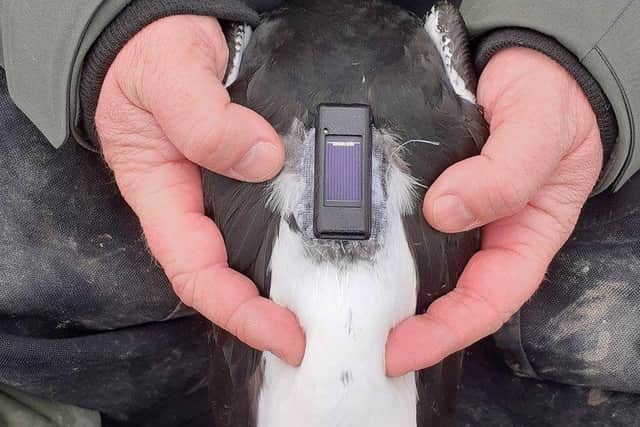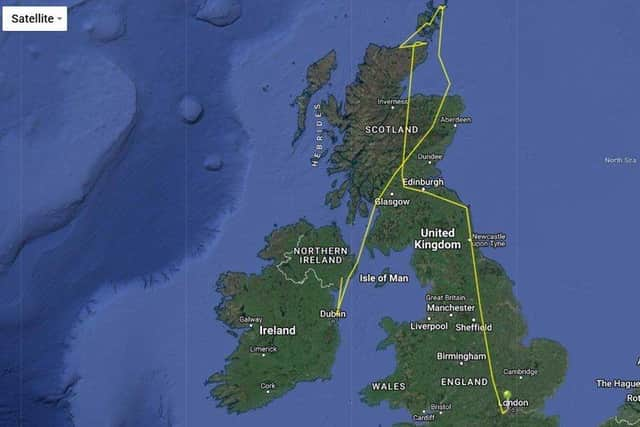Experts thought seabird had moved home from Orkney to London and was dining on pizza
A hi-tech satellite tag on the bird, first attached in Dublin Bay in the Republic of Ireland, tracked it as it headed north to feed on the shores of Sanday in Orkney,.
The GPS device, which is powered by tiny a solar panel, recorded the bird's migration before falling off on the island of Sanday.
Advertisement
Hide AdAdvertisement
Hide AdBut it continued to transmit a signal and it started travelling again, pinging its locations as a campsite, a pizza restaurant and then a residential street in Ealing West London.


Researchers they are offering a £100 reward for the return of the device, which is worth about £1,000.
They believe it was found on the shore at Sanday and picked up by a holidaymaker who then flew back south with to the UK’s capital city.
Professor Stu Bearhop, from the College of Life and Environment at the University of Exeter, said the trackers were like tiny plastic bricks powered by a minute solar panel.
They are superglued on to the large and distinctive black and white wading birds as part of a scheme with Dublin Bay Biosphere and are designed to fall off in the spring.


Prof Bearhop said: "They're really interested in how best to conserve those birds, and which habitats they need to put most effort into preserving.
"So it's really focused on what's happening in Dublin, but we end up with birds in Iceland, the Faroes, Shetland, Skye, and a few other places."
The research is being carried out by PhD student Steph Trapp, who says the tag fell off the bird on April 7.
Advertisement
Hide AdAdvertisement
Hide AdIt lay on a beach in Sanday until the end of May when it started moving again, finally ending up in London.


"The bird obviously hasn't gone all the way down there", she said, "So we think someone must have found the tag whilst on holiday in Sanday, and taken it down with them."
"It feels a little bit strange being able to track their whole holiday, but the tags are programmed to record a pretty accurate GPS location every couple of hours."
She added: "If we do get it back, we can re-deploy it on another bird over the winter next season, and get a bigger sample size."
Meanwhile, conservationists are investigating the discovery of a dead hedgehog on Barra which could threaten the island’s ground-nesting bird population.


It cost millions of pounds to remove hedgehogs from the Uists after number were released in a garden in 1974 to control slugs.
A NatureScot spokesperson said: “We received a report of a hedgehog killed on the road on Barra June 9. It is the first record on the island. NatureScot-employed trappers are currently on Barra, setting up a network of live catch traps and camera traps to establish whether more hedgehogs are present. Two sniffer dogs owned by the trappers are being used to detect hedgehogs. Any hedgehogs caught will be relocated and released in a safe location. Releasing mammals on islands can cause great harm to native wildlife and is treated as a serious wildlife crime.”
Any sightings of hedgehogs on Barra or North Uist should be reported to the Uist Wader Project Manager, Telephone 01463 7001636, email: [email protected].
Comments
Want to join the conversation? Please or to comment on this article.